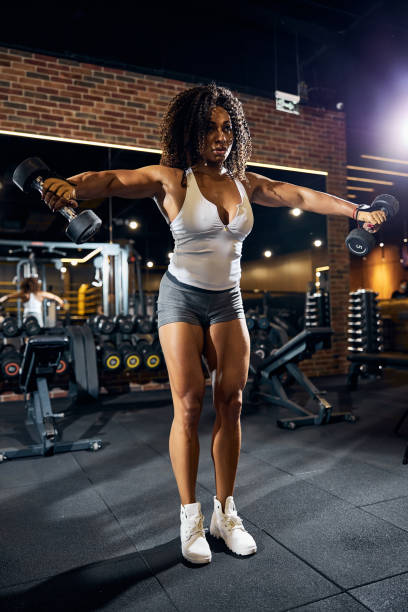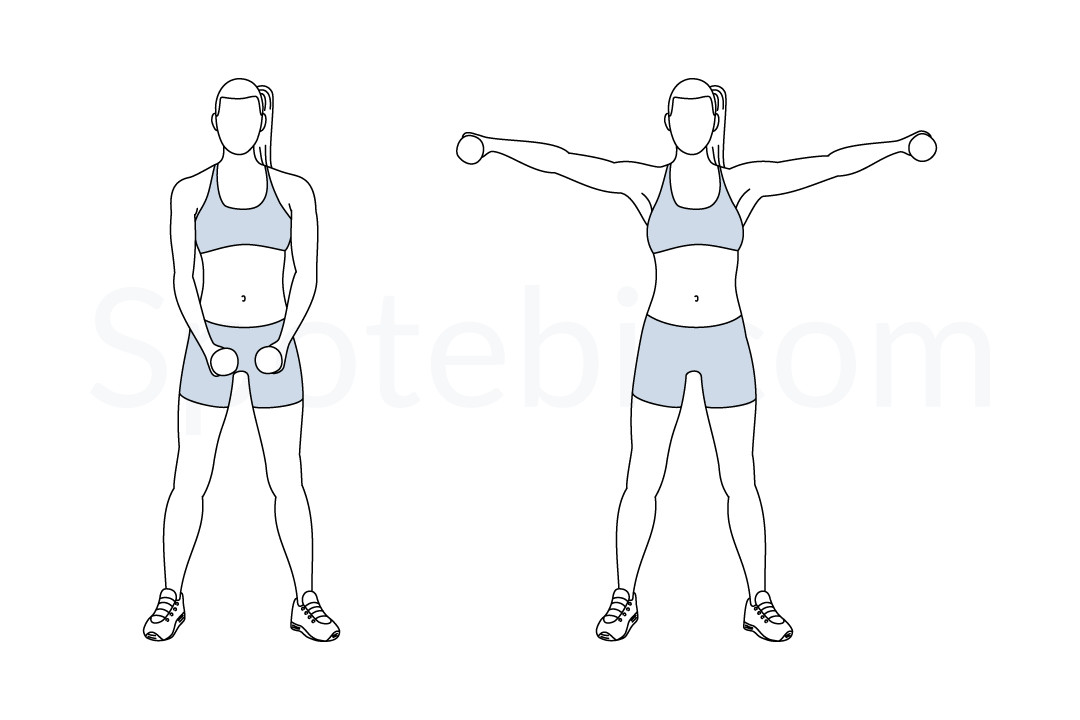The lateral raise is one of those foundational exercises that fitness enthusiasts swear by to build strong, defined shoulders. It’s not just a move; it’s an art form in sculpting your side deltoids, creating that wide-shouldered, V-tapered look that so many strive for. Whether you're using a shoulder lateral raise machine or traditional dumbbells, perfecting this exercise can elevate your shoulder game to the next level. But what makes the lateral raise such an effective move, and why has it stood the test of time? Let's dive into its history, current trends, and future outlook, along with a deep dive into its anatomy, performance tips, and variations. Follow us here at Wrangler's Remarkable Collection with Lainey Wilson.
Lateral Raise Exercise

The lateral raise has been a staple in bodybuilding and strength training for decades. Initially popularized during the bodybuilding boom of the 1960s and 1970s, it was embraced by icons like Arnold Schwarzenegger and Franco Columbu. At the time, the focus was largely on free weights, but the evolution of fitness equipment soon introduced the shoulder lateral raise machine. These machines, like the seated lateral raise machine and the lat raise machine, became crucial for isolating the deltoids while minimizing the risk of injury—a game changer in the industry.

Today, whether you frequent a Planet Fitness lateral raise machine or use the standing lateral raise machine at your local gym, the exercise remains a go-to for those targeting shoulder aesthetics and strength. The convenience of lateral raise machines for sale has even made it possible for enthusiasts to move this powerhouse into their home gyms.
Related: The Ultimate Gen Z Guide to Building Muscle Tag
Related: Remarkable Rectus Abdominis Exercises to Energize Your Core
Which Muscles Will You Strengthen with the Lateral Raise Exercise?
The primary muscle worked during a lateral raise is the middle or lateral head of the deltoid, the muscle that wraps around the top of your shoulder. This muscle is responsible for shoulder abduction, which is the movement of raising your arm out to the side. By working this muscle, you create width and definition in your shoulders.
In addition to the deltoids, the exercise also engages the upper trapezius to a degree, especially as you raise your arms. Secondary muscles like the supraspinatus and parts of your upper back also get involved, particularly when performing the move with variations such as the side lateral raise machine or side delt machine. This engagement helps stabilize your shoulder joints and upper body throughout the movement.

How to Perform the Lateral Raise Exercise
When performed correctly, lateral raises are a fantastic exercise for building shoulder width and strength. Here’s how to do it properly:
- Start Position: Stand with your feet shoulder-width apart, holding a dumbbell in each hand with your arms resting by your sides. Alternatively, if using a lateral press machine, adjust the seat height so that your arms are in line with the machine's handles.
- Movement: Slowly raise your arms out to the sides, maintaining a slight bend in your elbows. Your palms should be facing down, and the movement should be controlled—no jerking or swinging. Focus on lifting the weight from your shoulders, not your wrists or elbows.
- Stop at Shoulder Height: One common question is how high lateral raises should go. The answer: raise your arms only to shoulder height. Going higher may engage other muscles unnecessarily and reduce the focus on your side delts.
- Lower Back Down: After reaching shoulder height, slowly lower the weights back down to the starting position.
Important Considerations for the Lateral Raise
While the movement is simple, there are several important considerations to make sure you’re getting the most out of your lateral raises:
- Weight Selection: One of the most common questions is how much weight lateral raise requires. If you’re asking "How much should I lateral raise?" the answer is generally: light to moderate weight. This isn’t a move where you should be lifting excessively heavy; it’s more about controlled form and muscle activation.
- Form Over Ego: Whether using a deltoid raise machine or doing free-weight versions, focus on technique rather than going heavy. Poor form can lead to shoulder impingement or unnecessary stress on your joints.
- Reps and Sets: A common debate is how many lateral raise sets or how many lateral raise reps should I do. Generally, aim for 3-4 sets of 12-15 reps. This ensures enough volume to fatigue the muscle without overloading it.
Anatomy and Variations of the Lateral Raise
The lateral raise has several variations depending on your goals, equipment availability, and personal preference. Here's a breakdown of some of the most popular methods:
- Seated Lateral Raise Machine: This variation offers greater stability as you're seated, reducing the involvement of your core and allowing for more focus on your deltoids.
- 1 1 2 Side Lateral Raises Athlean X: A method popularized by Athlean-X, this variation adds a half-rep after every full rep, increasing time under tension and maximizing muscle recruitment.
- Side Lateral Raise vs Rear Lateral Raise: While the traditional lateral raise targets the side delts, the rear lateral raise shifts focus to the rear delts and upper back muscles.
Two Types of Shoulder Abduction
When discussing shoulder abduction during lateral raises, you’re primarily targeting the middle deltoid. However, shoulder abduction can occur in two ways:
- In the frontal plane, which is the traditional lateral raise, your arms move directly out to the sides.
- In the scapular plane, where your arms move slightly forward in a “Y” shape, engaging different parts of the shoulder.
Using a Cable vs. Using a Dumbbell: Which Should You Choose?
When comparing cables to dumbbells, both have their pros and cons:
- Dumbbells: The resistance decreases at the bottom of the movement since gravity isn't pulling as hard on the weight.
- Cables: Maintain consistent tension throughout the range of motion, making them a great alternative when you want constant muscle engagement.
Workout Table
Here’s a quick workout table to incorporate lateral raises into your routine
Exercise | Sets | Reps | Rest Time |
Dumbbell Lateral Raise | 4 | 12-15 | 60 seconds |
Cable Lateral Raise | 3 | 12-15 | 60 seconds |
Machine Lateral Raise | 3 | 10-12 | 60 seconds |
How to Progress Your Lateral Raises
One of the best ways to get better at lateral raises is consistency, but as you improve, you may wonder how much lateral raise is good or how many lateral raises per week you should do. Generally, 2-3 times per week is optimal for building strength and size. You can also progressively increase the weight or introduce new variations like a side lateral machine or rear lateral raises to continuously challenge your muscles.
Conclusion
As fitness continues to evolve, so too will the tools and techniques for lateral raises. With advancements in machine design, like side delt machines and planet fitness lateral raise machines, along with online coaching platforms, there's never been a better time to focus on shoulder development. Whether you prefer the simplicity of dumbbells or the targeted approach of a lateral raise machine, mastering this exercise can lead to stronger, more defined shoulders that enhance your overall physique.
